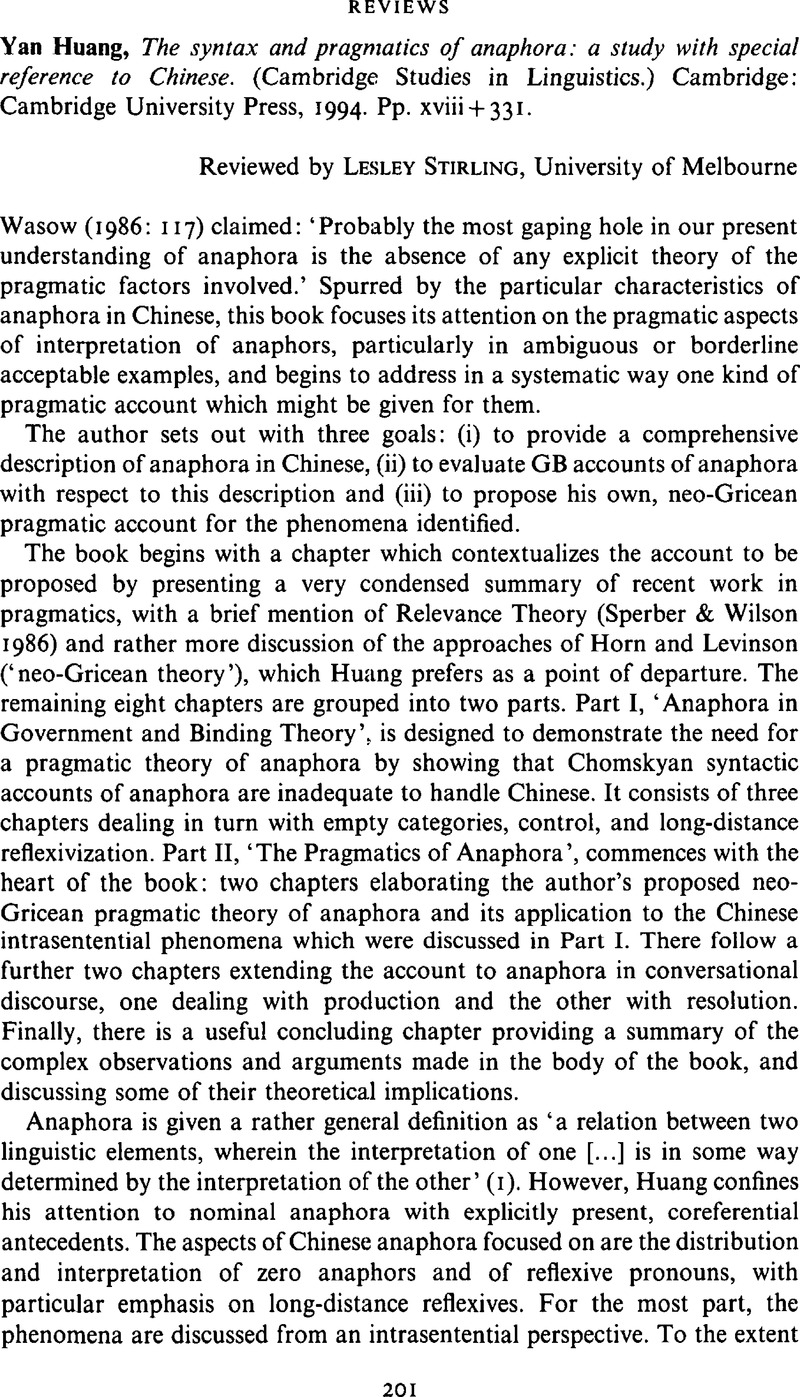No CrossRef data available.
Article contents
Yan Huang, The syntax and pragmatics of anaphora: a study with special reference to Chinese. (Cambridge Studies in Linguistics.) Cambridge: Cambridge University Press, 1994. Pp. xviii+331.
Published online by Cambridge University Press: 28 November 2008
Abstract
An abstract is not available for this content so a preview has been provided. Please use the Get access link above for information on how to access this content.

- Type
- Reviews
- Information
- Copyright
- Copyright © Cambridge University Press 1996
References
Fox, B. (1987). Discourse structure and anaphora: written and conversational English. Cambridge: Cambridge University Press.CrossRefGoogle Scholar
Levinson, S. (1987). Pragmatics and the grammar of anaphora: a partial pragmatic reduction of Binding and Control phenomena. Journal of Linguistics. 23 379–434.CrossRefGoogle Scholar
Levinson, S. (1991). Pragmatic reduction of the Binding Conditions revisited. Journal of Linguistics. 27 107–161.CrossRefGoogle Scholar
Sperber, D. & Wilson, D. (1986). Relevance: communication and cognition. Oxford: Basil Blackwell.Google Scholar
Wasow, T. (1986). Reflections on anaphora. In Lust, B. (ed.) Studies in the acquisition of anaphora. (Vol. I.) Dordrecht: Reidel. 107–122.CrossRefGoogle Scholar




